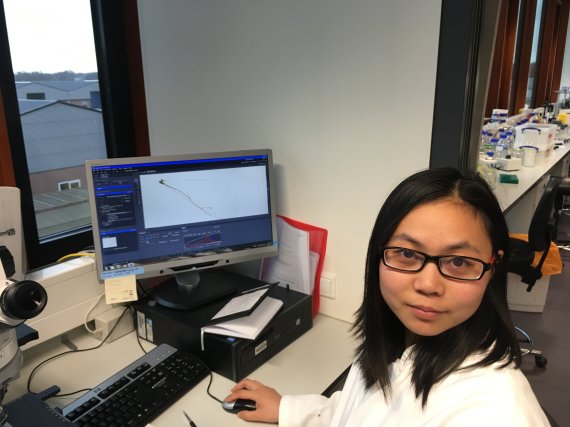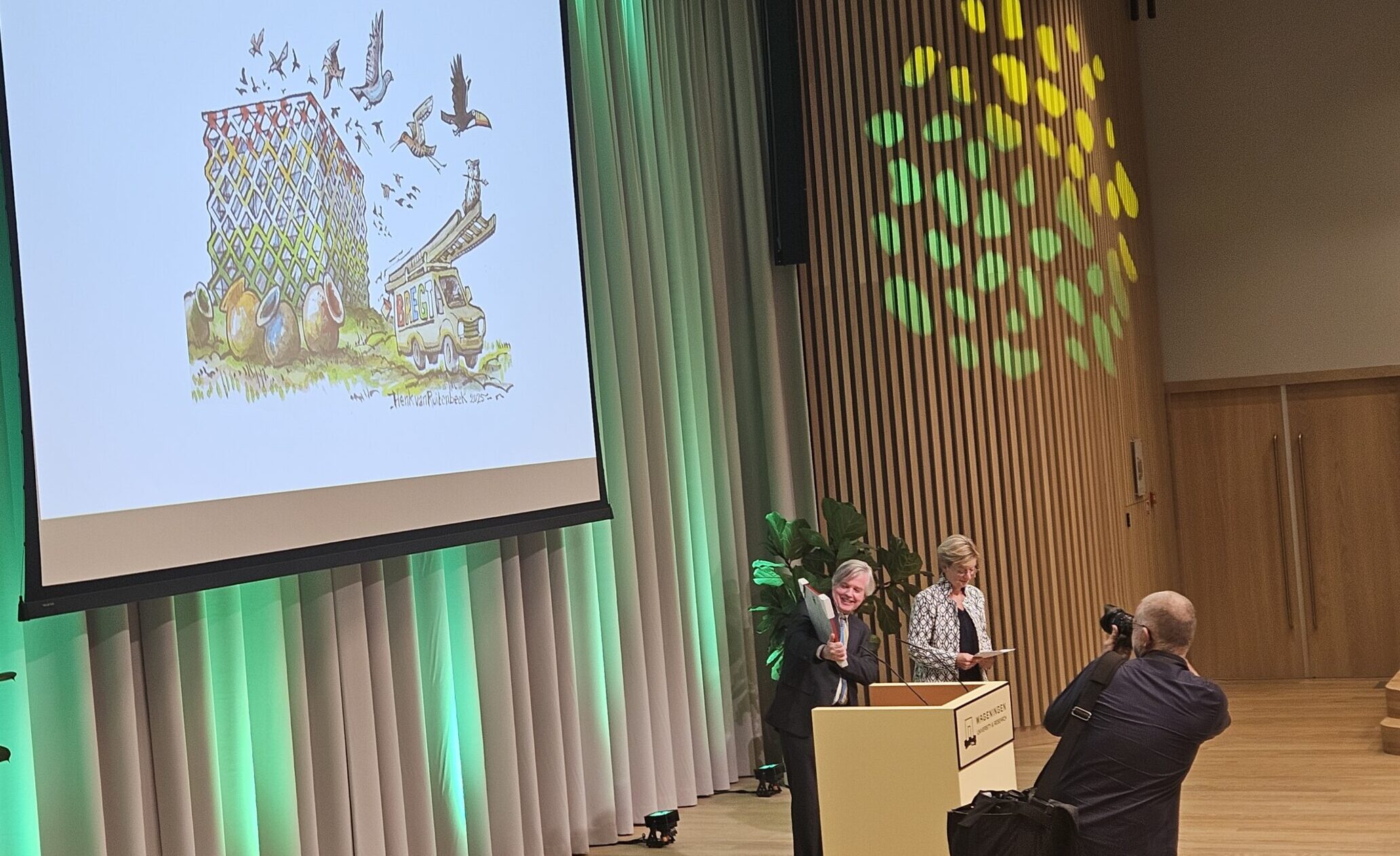If we want to deal with a plague of aphids in the greenhouse, how do we select or create insects that will get that plague under control quickly? And if we want a honeybee that is no longer susceptible to the Varroa destructor mite, can we breed Varroa-resistant bees? The breeding of insects is still in its infancy.
Useful parasitoid wasps
PhD student Shuwen Xia made some preliminary investigations. She tested several breeding techniques on the Nasonia vitripennis parasitoid wasp. This wasp lays eggs in blowflies and large bluebottles, and can therefore be used for biological pest control. But Xia chose the Nasonia primarily because there is already a lot of genetic information about this parasitoid wasp. That makes it suitable as a model insect for testing breeding techniques.
‘It is not easy to breed insects,’ says Bart Pannebakker, a researcher at the Laboratory of Genetics. He was Xia’s supervisor, together with Piter Bijma of the Breeding and Genomics group. ‘First of all, the Nasonia is very small: just a few millimetres long. To get DNA from a cow, you take a blood specimen. To get DNA from an insect as small as this, you need the whole insect and then you can’t go on breeding with that individual. Secondly, they reproduce so fast that you have to decide which insects you will use for breeding before you have had a chance to analyse the DNA. And thirdly, there are no DNA chips yet for making a quick comparison between insects. You have to determine the DNA of each insect separately every time in a sequencer. So it is labour-intensive.’
Breeding value
So Xia did not go for complex characteristics, but a clearly visible one: the wing size of Nasonia wasps. And she compared several different breeding routes. The simplest route is mass selection. You breed 1000 insects and select the insects with the largest wings (if that is what you want). You then use these specimens to continue breeding, selecting the largest wings again. For many insects, this seems the most obvious breeding process to adopt. One variant is to select within a family, comparing the characteristics of perhaps 30 brothers and sisters.
Xia conducted trials to test the most advanced breeding process, genomic selection. In this selection process, you scan the entire genome of an insect and ascribe a breeding value to it, based on the insect’s useful genetic characteristics. This is a very successful breeding technique in livestock breeding, especially for characteristics that are difficult to measure in the animal. Such complex characteristics are often found in insects, and include protein levels or reproductive capacity. The older breeding techniques are inadequate for these kinds of characteristic.
Flow chart
Xia has made a handy flow chart that shows which breeding technique insect breeders should use to achieve their breeding objective. In many cases, mass selection will do, Xia concluded, but in certain cases it is better to use genomic selection.
This is useful information for companies that are developing biological pest control methods or breeding insects for livestock and and fish feed, says Pannebakker. ‘But you need to make it practically usable first. We are going to work on that with Wageningen Livestock Research.’

 Photo: Shuwen Xia.
Photo: Shuwen Xia. 

